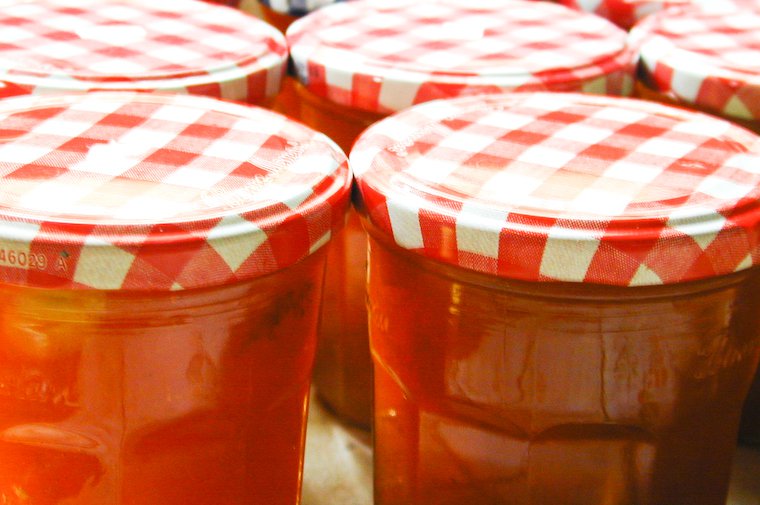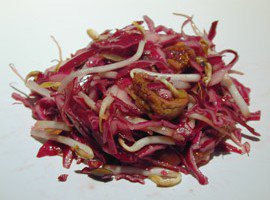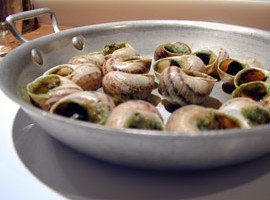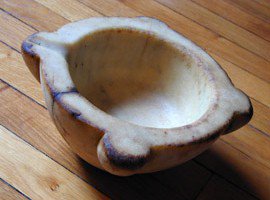Confiture d’abricots aux amandes
When I spend time at my parents’ house in the Vosges, my mother and I start out by making a mental list (we haven’t reached the point of actually writing down that list – yet) of what we’re going to cook, bake and eat. One of the items I mentioned this time was jam : over the years, I’ve often seen my mother make jam, I’ve made jam on my own, we’ve talked about jam together, but we had never made jam together.
At the Gérardmer market, one of the produce stalls had abricots pour confiture : it was not altogether clear why they were labelled so, but they were a bit smaller than the regular ones, maybe not as pretty, and in any case cheaper. There was just one crate left, and we bought it with that special thrill you get from snatching the last of anything.
A couple of days later, we set out to make some apricot jam, taking our apricots out onto the garden table to stone and slice them. And you know the ad that says “great cheese comes from happy cows”? Well, I’m certain that great apricot jam comes from apricots prepped with your mom in a sunny garden, while your boyfriend and your father are having a chat, and your sister is taking a nap inside.
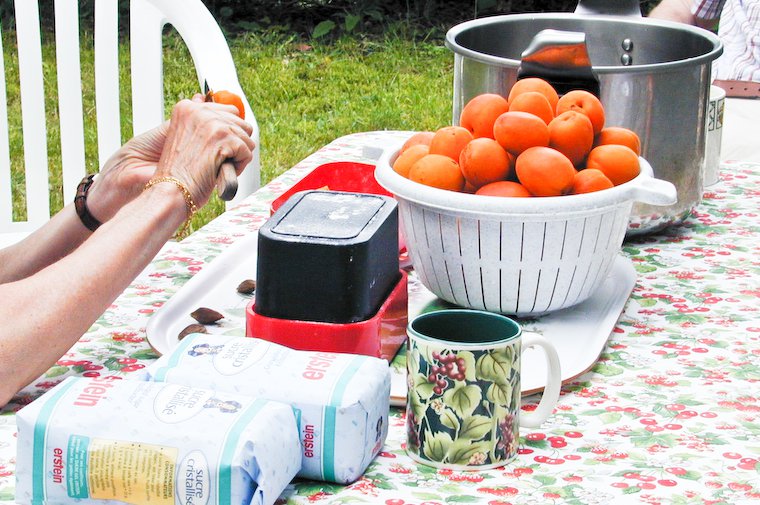
The cool thing about making jam with my mother, besides the simple words “making jam with my mother”, is the industrial proportions it can take. When I’ve made jam on my own, I’ve usually shot for about two jars per batch : I don’t consume that much jam (Maxence hardly any), I want variety, I have limited storage space, and most of all I’ve had to rely on the pricy Parisian produce stalls for supplies. But with my mother, it’s more about making twelve jars at a time, using fruit that we’ve picked ourselves, or bought, for a reasonable price, at the market.
And there’s a definite, indisputable fun factor in putting two kilos of fresh apricots together with two kilos of sugar in a big pot, cracking the stones open to get the almonds inside, bringing all of it to a rolling boil, and stirring it with a long wooden spoon like some kind of witchy decoction, until my mom officially declares it done, at which point you get to pour the piping hot mixture into the jars you’ve prepared and lined up, using the extra-convenient-especially-made-and-mighty-smart funnel tool (my mom’s got gear) and a big ladle. Just be extra-careful to distribute the apricot almonds evenly among the jars, because they really are the best part, aren’t they?
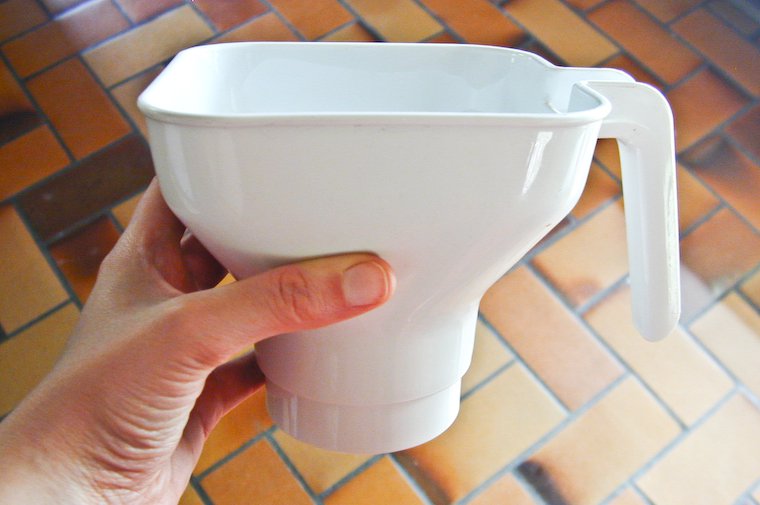
Of course, now comes the hard part, the one in which you have to wait and let the jars rest, allowing them to age on a shelf in the cool cellar. But in a few months, when these glowingly orange jars are nice and ripe, you can be sure one of them has my name on it.
Important note : this apricot jam recipe uses the almonds inside the stones. This gives the jam a particularly good flavor, and makes for a few lovely crunchy bites per jar. However, the almonds inside apricot stones, like bitter almonds, contain hydrocyanic acid. The human body has no problem dealing with it if ingested in small doses, but 30 to 50 almonds eaten in a short amount of time can kill an adult! It’s perfectly safe to include a few in a jar of jam, but just keep the warning in mind.
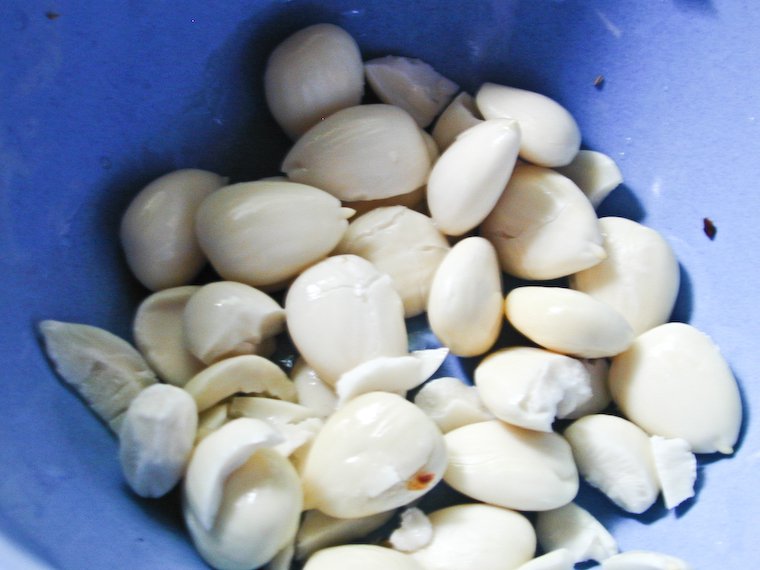

Have you tried this? Share your pics on Instagram!
Please tag your pictures with #cnzrecipes. I'll share my favorites!
Ingredients
- 1.2 kilogram (2 2/3 pounds) ripe apricots
- 1 kilogram (5 cups) sugar
Instructions
- Rinse, scrub if necessary, and dry the apricots. Slice them in two, remove the stone, and cut the flesh in smallish pieces. Reserve the stones.
- Weigh the amount of apricot flesh you get. Transfer the apricots to a large pan, and combine with the same weight of sugar as of fruit. If you used 1.2 kg of apricots, you should have about 1 kg of apricot flesh, but it's best to weigh it to make sure and adjust the amount of sugar.
- Crack about 18 of the apricot stones open with a nutcracker (see important note), to get the almonds inside. Bring water to a boil in a small saucepan, remove from heat, and put in the almonds. Let rest for about thirty seconds (this process is called "blanching"), then transfer to a colander and rinse under cold water.
- The papery skin of the almonds will then slip off easily. Reserve the peeled almonds and discard the rest.
- Wash the glass jars and their lids carefully, then soak them in boiling water for 10 minutes, and set them out to dry upside down on a clean kitchen towel.
- Put a saucer in the freezer. Put the pan over medium heat, until the apricots have started to melt and produce juice, stirring frequently with a wooden spoon. Turn the heat up, and bring the mixture to a boil. Cook for about 20 to 25 minutes, keeping it at a gentle boil and stirring occasionally.
- Keep a close eye on it : at first the mixture will almost double in volume, producing a light orange, thick foam (hence the necessity of a large pan).
- After a while it will reduce back down, and bubble quietly while taking on an amber, dark orange color. About 15 minutes into the cooking, add in the peeled almonds.
- Keep stirring until it feels like the mixture is thickening slightly. Although it is subtle, you'll see the change when you lift the wooden spoon and look closely at the drops dripping from it : they'll get thicker and will drip down slightly slower. Remove the saucer from the freezer, put a drop of jam on it and tilt the saucer to see if the jam is set. If not, let it boil a bit more before testing again.
- Skim the foam from the surface with a slotted spoon to have a clearer jam (reserve the foam, it's delicious, as a topping on yogurt for instance), but that's optional in my opinion.
- Pour the jam in the prepared jars until they are full (watch out, jam will be extremely hot) using gloves and a funnel if you have one. Wipe carefully if there was any spillage and close the lids tightly. Let cool to room temperature upside-down on the counter, then store in a cool and dark place for a few months.


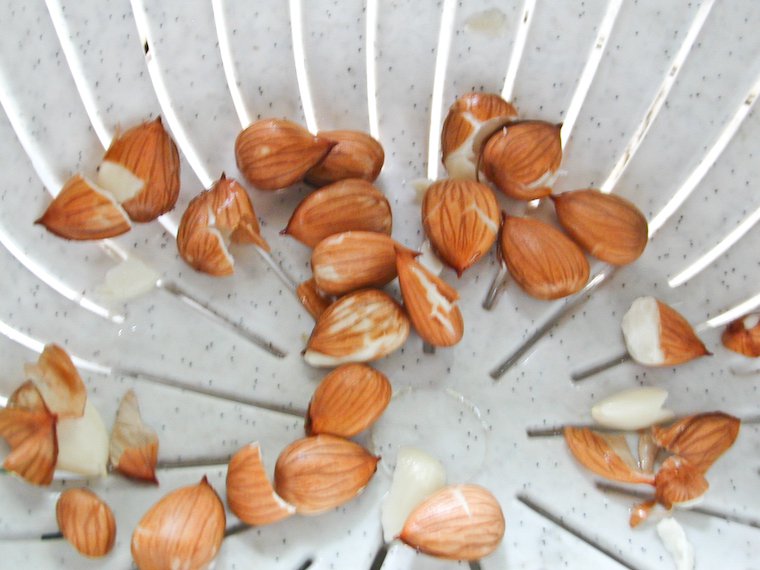


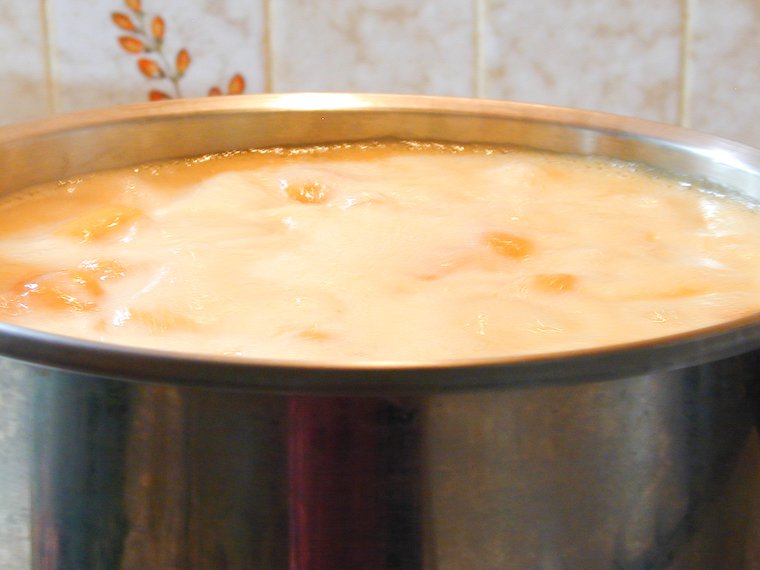
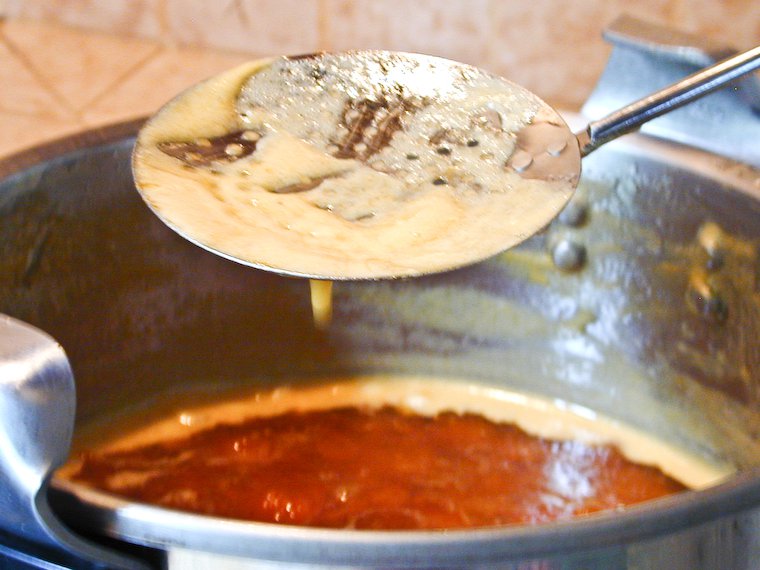

Notes
Important disclaimer! This jarring method (boiling the jars then closing them tightly and letting them cool upside down) is one that's been commonly practiced in France for generations and generations. However, using a sterilizing machine and rubber-lidded jars is the only way to be absolutely safe. For more information on home-canning, click here.


